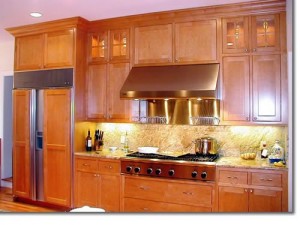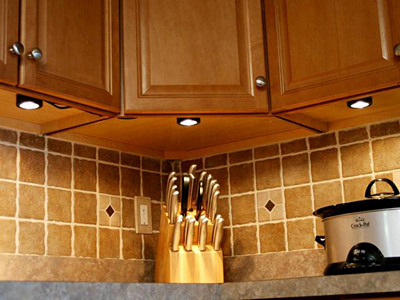A significant part of our lives are spent in our kitchens. Whether we are cooking, dining, entertaining others or simply gathering there, the kitchen is usually the central hub of the home. As such, it is important that it be designed in such a way that it improves the lives of the people who use it.
Lighting plays a significant role in a room’s design and function. The kitchen is no exception.
Task Lighting

Getting the most out of our kitchens requires many types of lighting. When cooking meals or preparing other items, task lighting is essential.
Task lighting is strategically placed in areas of the kitchen where it is important to clearly see what you’re doing. Areas of your kitchen where clear, focused lighting is important include pantries, above islands, underneath cabinets and in any area where food preparation or reading recipes takes place.
When mapping out task lighting in your kitchen, it is important to properly lay out where it is you complete common tasks and spend the most time preparing food. This is because task lighting that is installed in the wrong places or at the wrong angles can cast shadows on places where clear lighting is key; making your prep areas difficult to use.
Ambient Lighting
Ambient lighting is an indirect light source that makes a room feel warm and inviting. It’s ambient lighting that completes a kitchen’s lighting system by offsetting the sharp angles and shadows created by task-specific and other forms of direct lighting.
Ambient lighting provides an additional layer and prevents you from having to depend upon one central light source to light the entire kitchen.
Cabinets (Interior)

For kitchens with glass cabinet doors or for those with open shelving, interior lighting can have multiple benefits to the overall lighting in the kitchen.
It acts as a form of task lighting when retrieving items to prepare recipes. In the evening, the soft glow emanating from the cabinets is an effective form of ambient lighting. At night, when everyone has gone to bed, interior cabinet lighting is a practical night light that can keep the center of the home well-lit. This is especially useful when you have overnight guests who may not be familiar with the layout of your home.
Dimmers are a great way to adjust the power being used if you’re concerned about the amount of energy being used by leaving the lights on throughout the night.
Cabinets (Under)
Similar to lighting inside of cabinets, lighting installed underneath cabinets can serve as both task and ambient lighting. Lighting underneath the cabinets is an ideal solution for smaller kitchens or those without islands. In these instances, the surfaces beneath the cabinets are the only available counter space that can be used for food prep.
Ambient lighting can be incorporated into the kitchen by installing lighting undernath the lower set of cabinets (closest to the floor). The good news is you can get this soft glow without having to have an electrician come out. Instead, try running rope lighting underneath the length of the lower cabinets and simply plug them in when needed.
As you can see, installing lighting underneath the cabinets can be essential for a fully functional kitchen.
—
Kitchens, more often than not, serve as the central gathering spot of the home. The proper lighting can ensure that whatever we do in our kitchens is the best experience possible.

